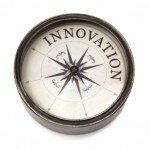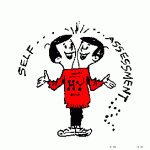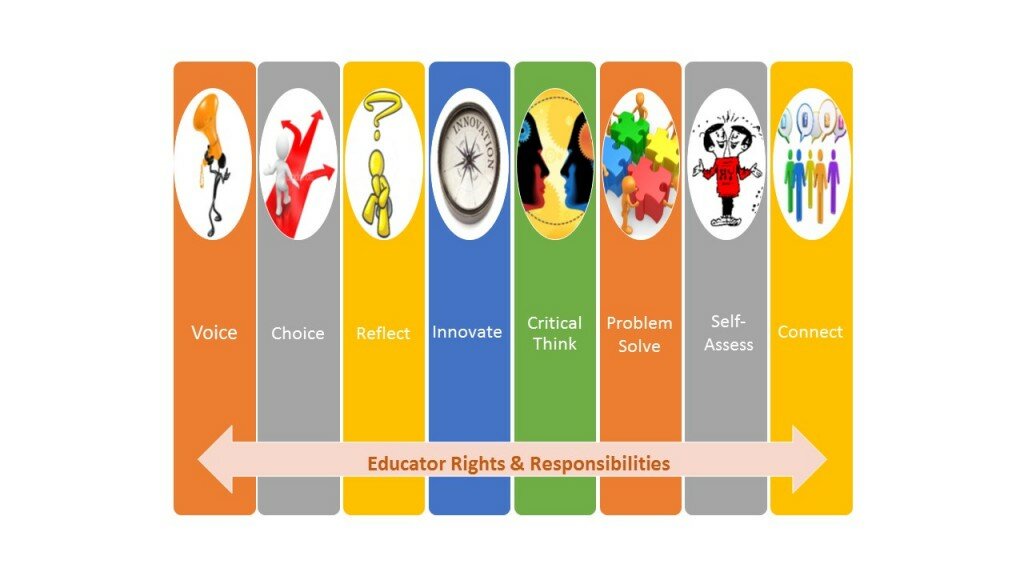Educator Rights & Responsibilities for Future-Ready Students
At the Innovative Education in Colorado (#InnEdCo15) conference, our Leadership preconference featured George Couros, who shared his thinking on transforming classrooms via Sylvia Duckworth’s great infographic. (8 Things to Look for In Today’s Classroom) This got me thinking: What if we applied these 8 things to professional learning and practice for teachers and administrators? As I continued thinking about these 8 things, I began to think of these as not just rights, but also responsibilities if we are ever going to achieve innovation in education and fundamentally transform learning to become relevant for each learner. What would you add to the list?
 Voice
Voice
Teachers and administrators should learn from others and share their learning! Find your voice, get connected via Twitter, present at conferences, in staff meetings, and at parent meetings. Share the exciting learning that is occurring in your school or classroom.
 Choice
Choice
Strength-based learning: Give educators a choice! We understand that technology is opening a pathway to be able to personalize learning for each student. Why not use the same tools and strategies to make professional learning personal for every educator? Offer a blend of online and face-to-face learning. Give educators choice by letting them set personal learning goals and develop a pathway to get there. Provide coaching, support and resources to help them along the way.
 Time for Reflection
Time for Reflection
Everyone can benefit from writing and reflecting on what is being learned. Combine this with “Voice” – and you will make the case to start a blog to share your reflective practice with the world! Model reflection for your students. Be a co-learner.
 Opportunities for Innovation
Opportunities for Innovation
Administrators: teachers need opportunities for innovation in a safe environment. I’ve made this case on my blog a few times…teacher creativity leads to student creativity. Teachers: Design matters. Be innovative in creating learning experiences for your students that offer them the opportunity to think deeper, create and make connections in pursuit of answers and solutions to real world problems. This doesn’t happen in the factory model of education. Don’t just think outside the box – build a new box!
 Critical Thinkers
Critical Thinkers
Teachers and administrators should ask questions and challenge what they see. Don’t just do things in education because that’s the way it’s always been done. Times have changed! Challenge the status-quo and seek out opportunities to collaborate and problem solve for each student in your charge.
 Problem-Solvers – Finders
Problem-Solvers – Finders
Teachers and administrators face tough challenges. Merriam-Webster defines innovation as a new idea, device, or method. Find innovative solutions. Embrace the cycle of problem solving where you try, fail, and try again. Model this for your students.
 Self-Assessment
Self-Assessment
Self-assessment is formative assessment. It’s part of reflective practice. And, it’s important that teachers and administrators do this. Portfolios can help. And model. And give you voice. And help you connect and grow.
 Connected Learning
Connected Learning
Being a connected educator will make you a better educator. If we hope to be able to help our students safely and effectively navigate social media and the hyper-connected online world, we need to understand it as a participant –and a learner– ourselves. If we hope to keep up with the rapidly growing set of technology tools and strategies for learning, then Twitter is the place to be.




